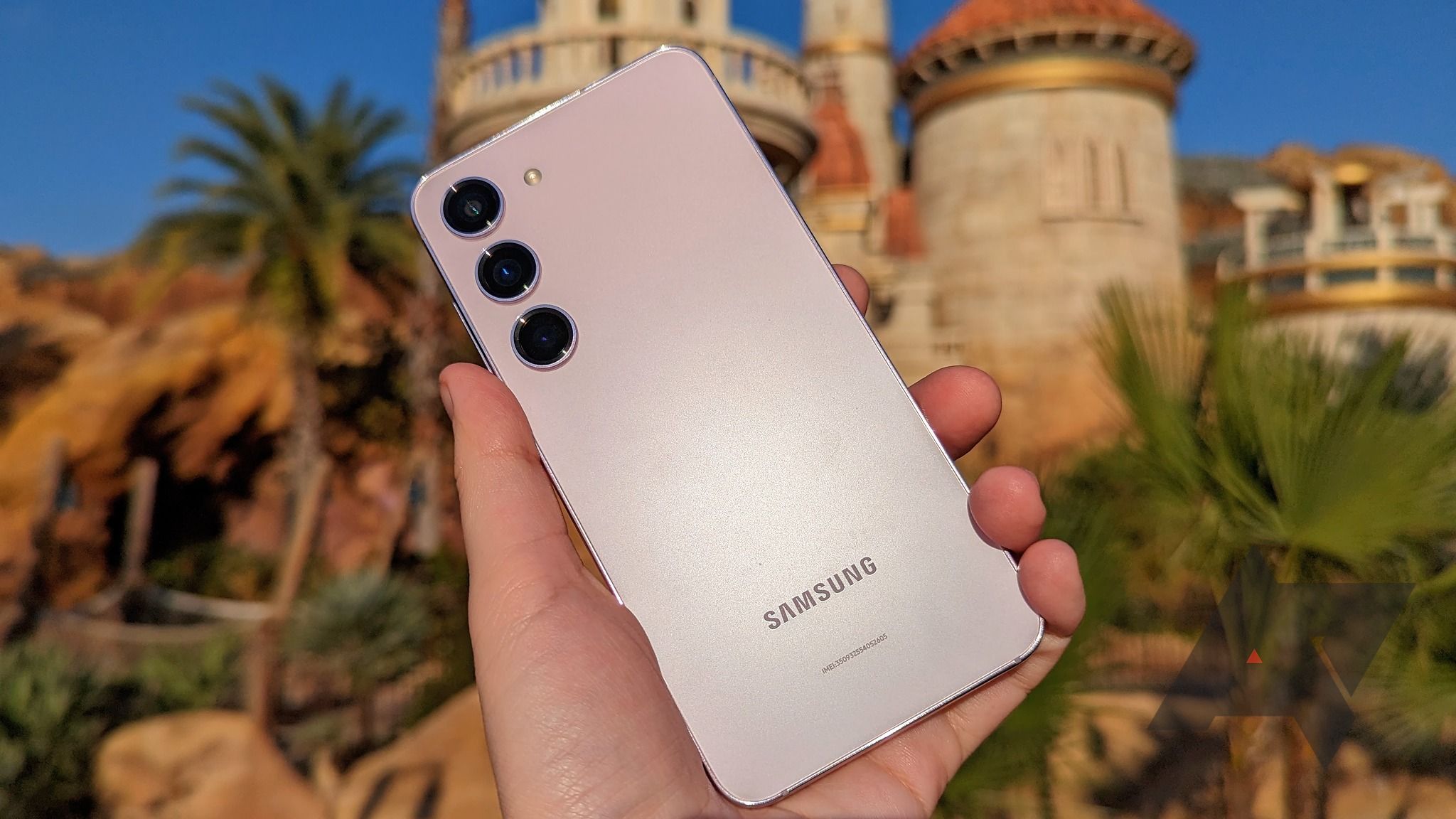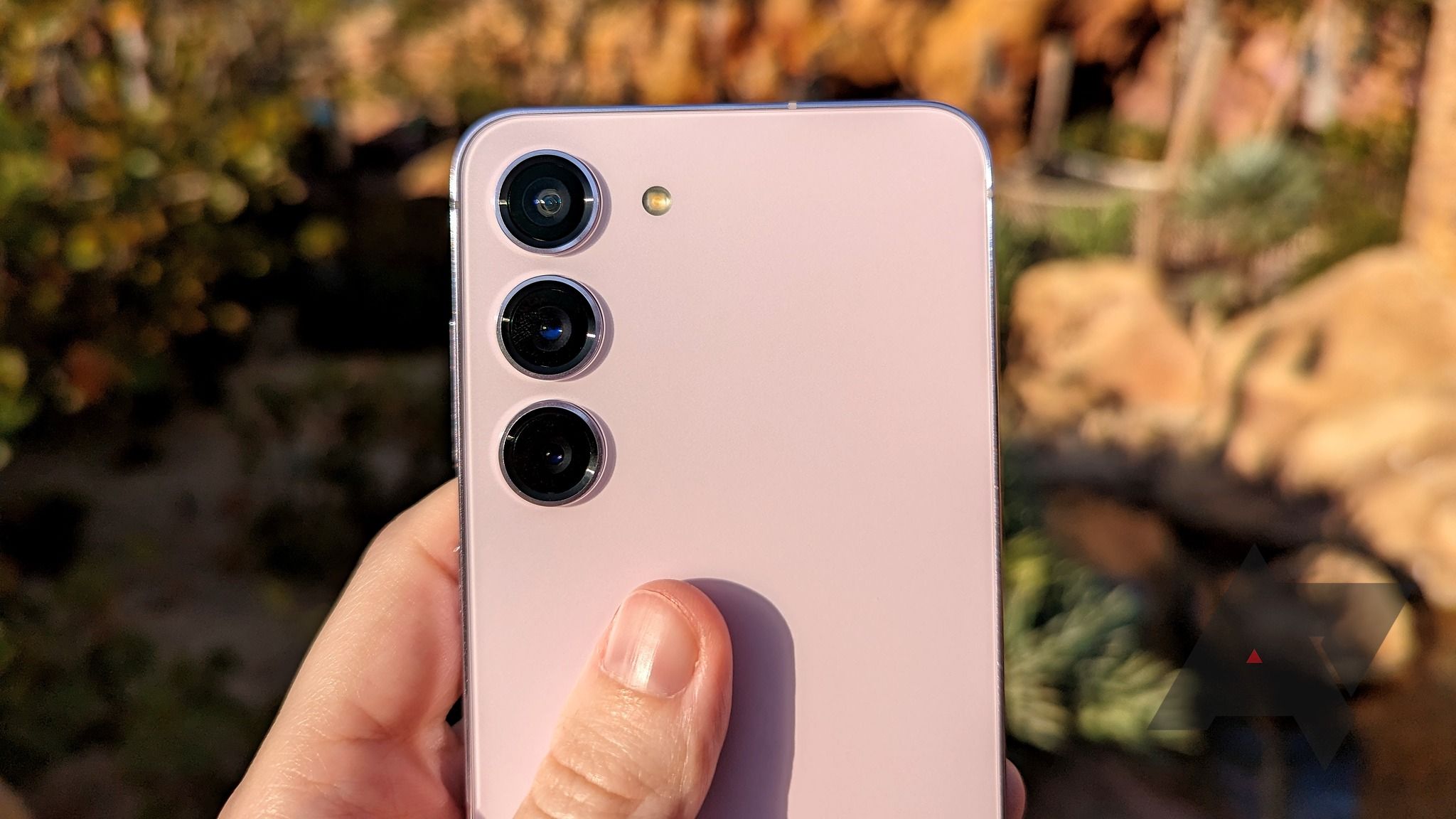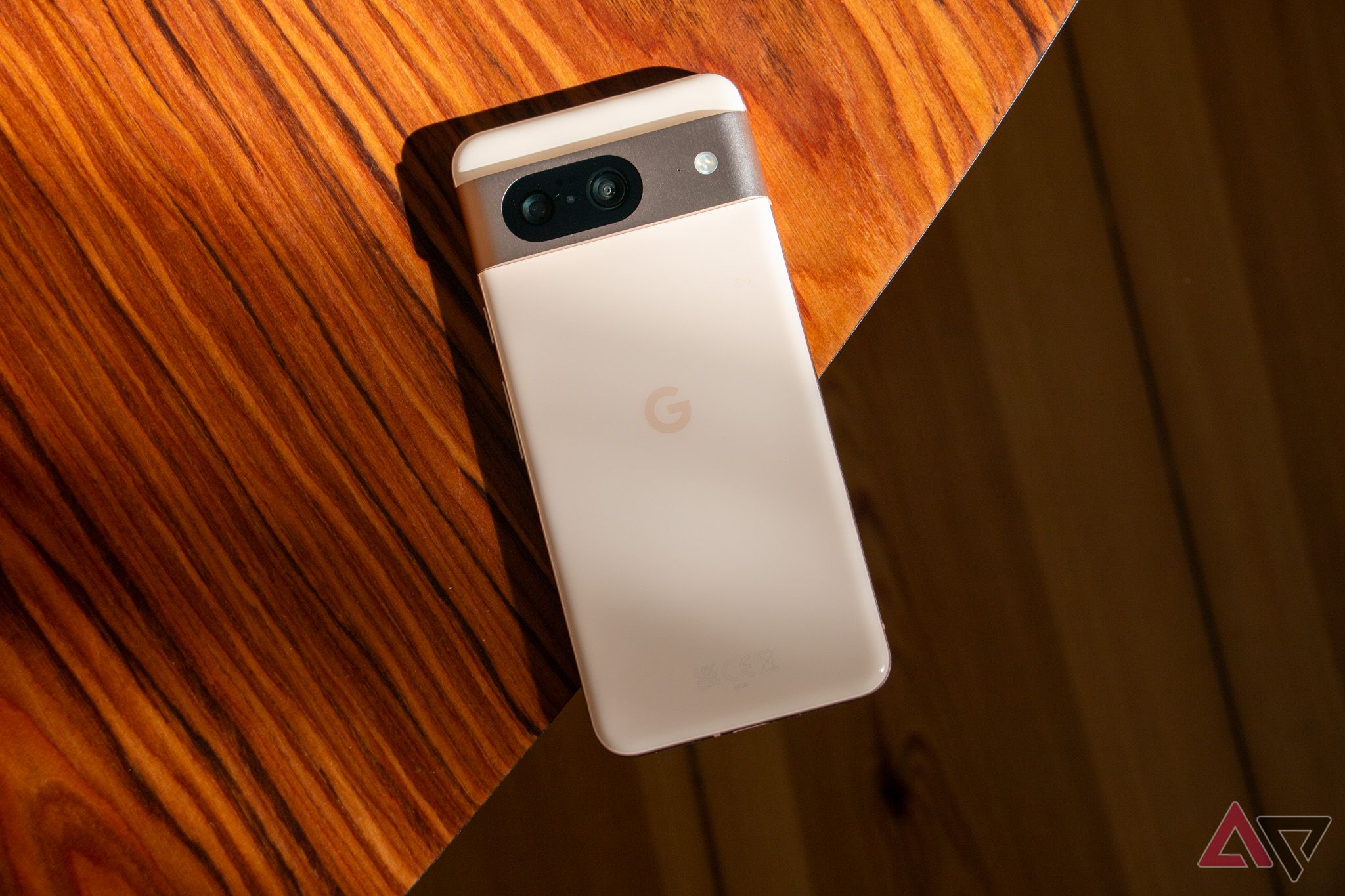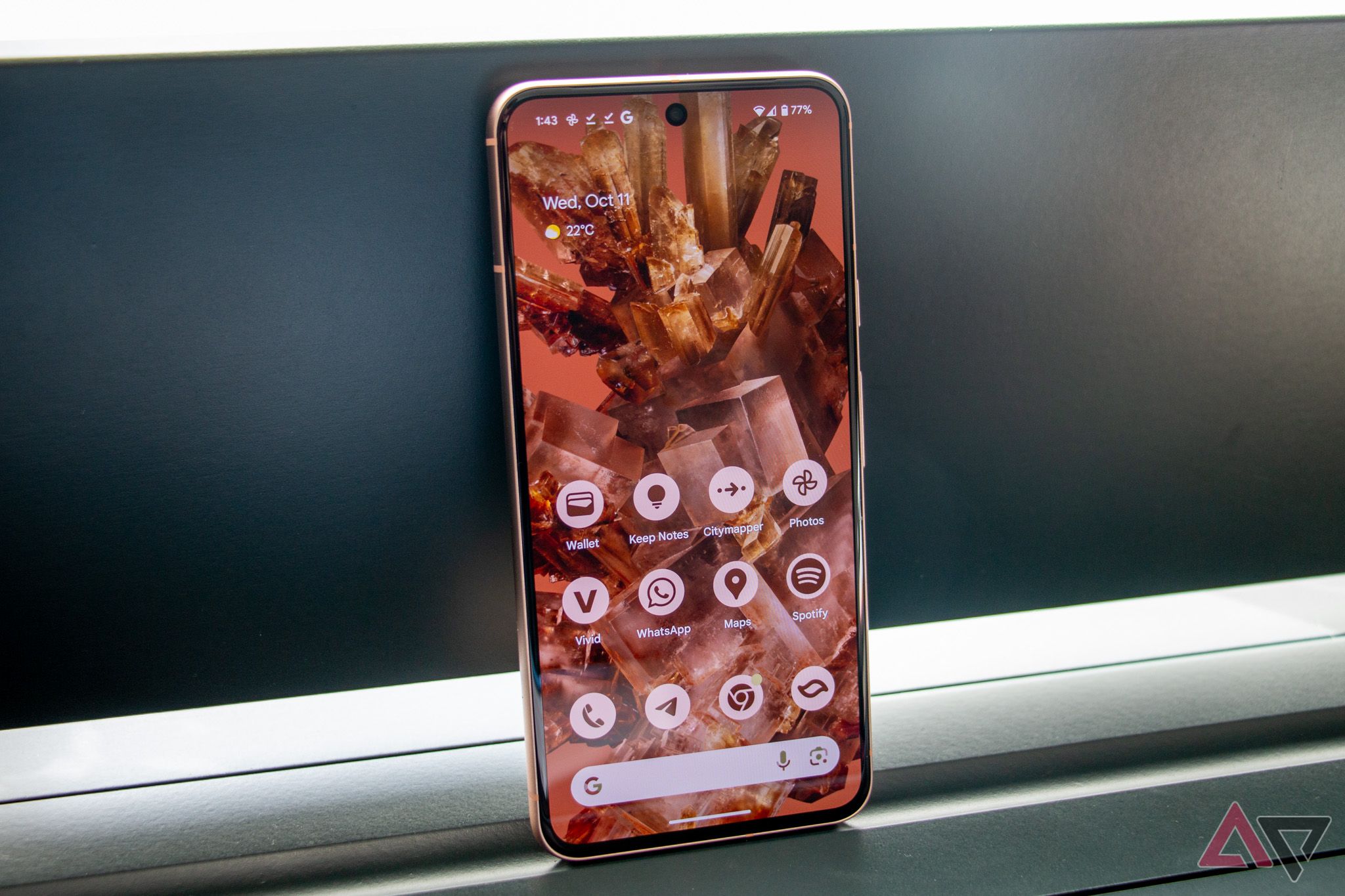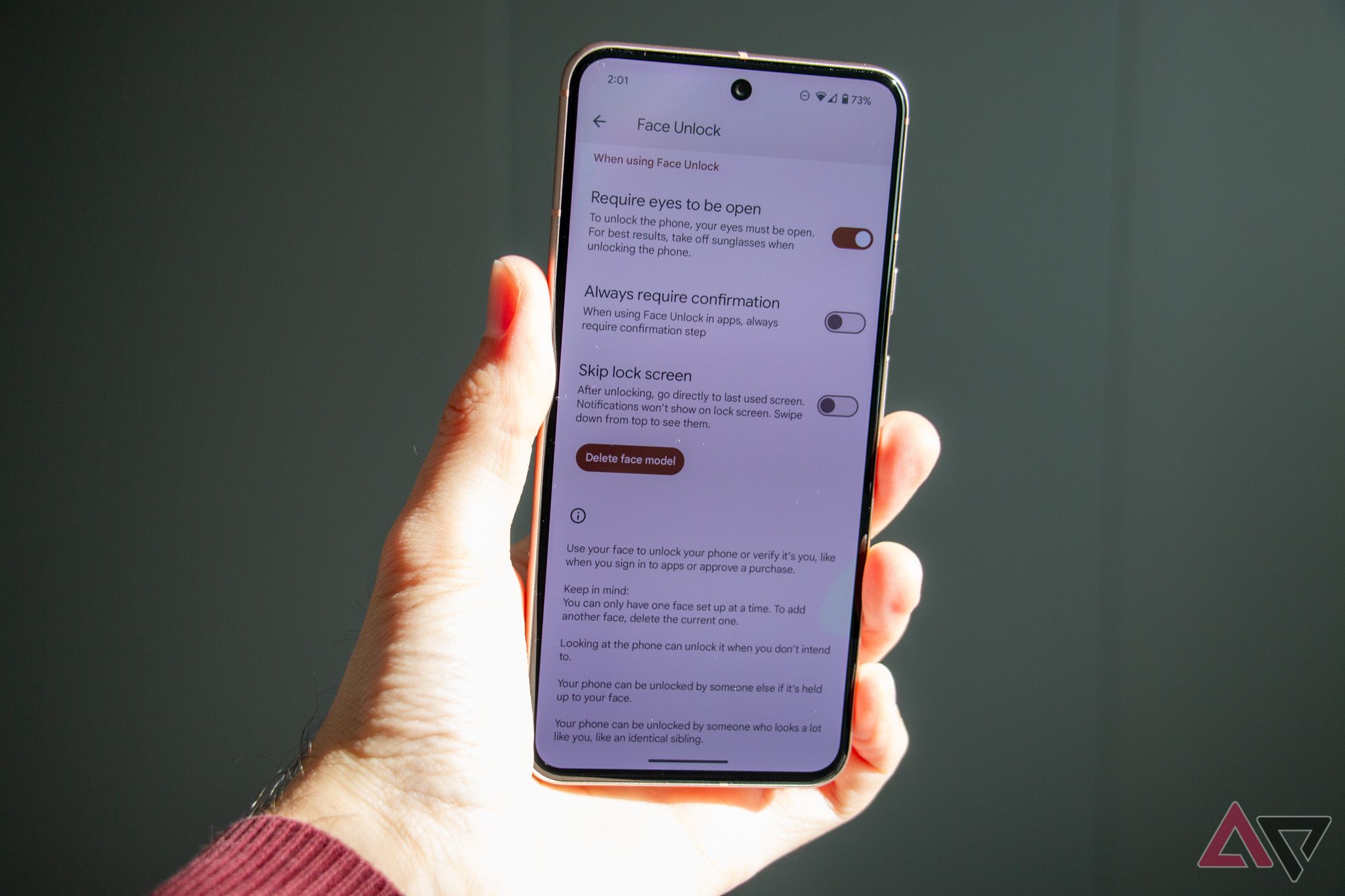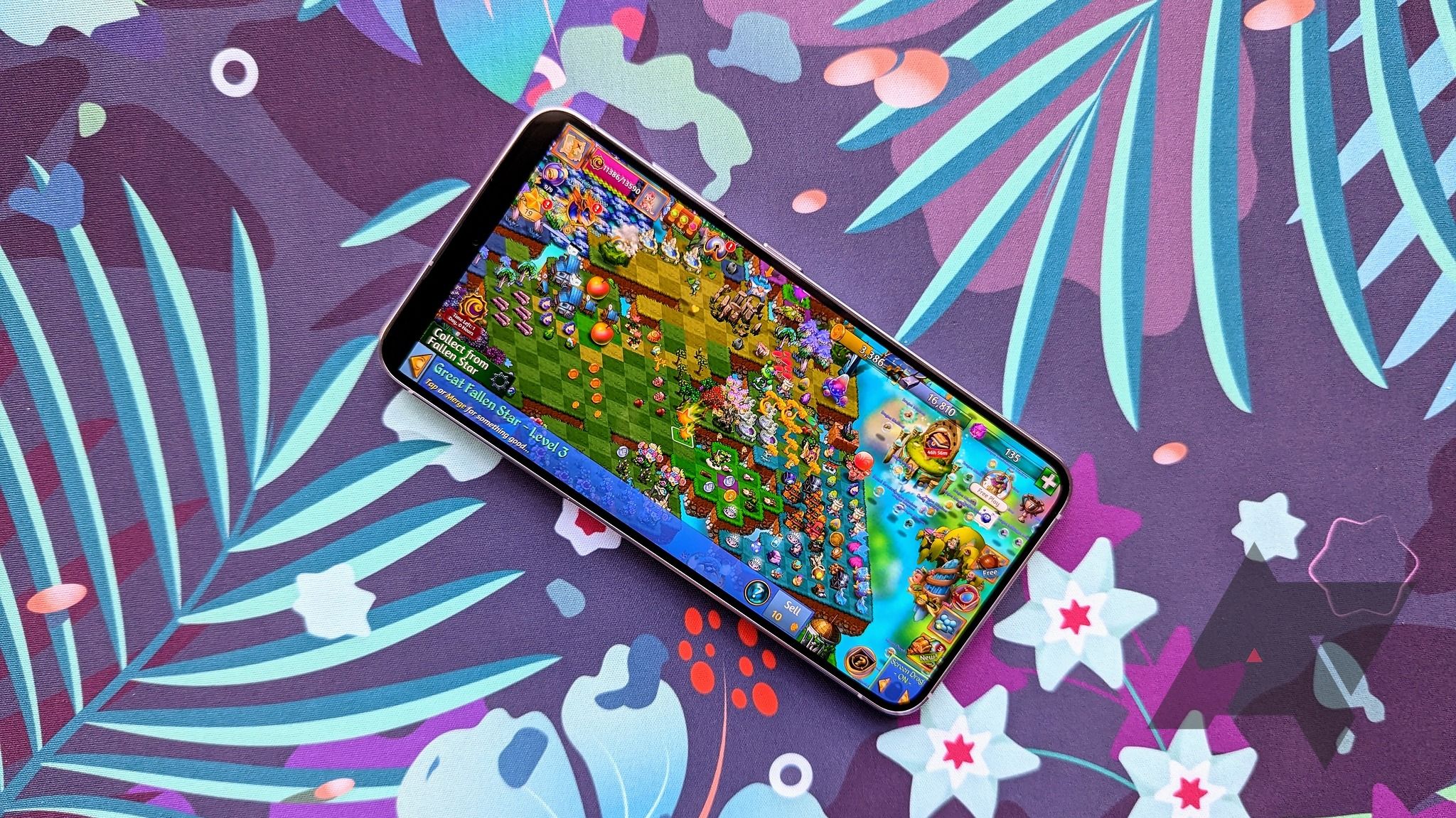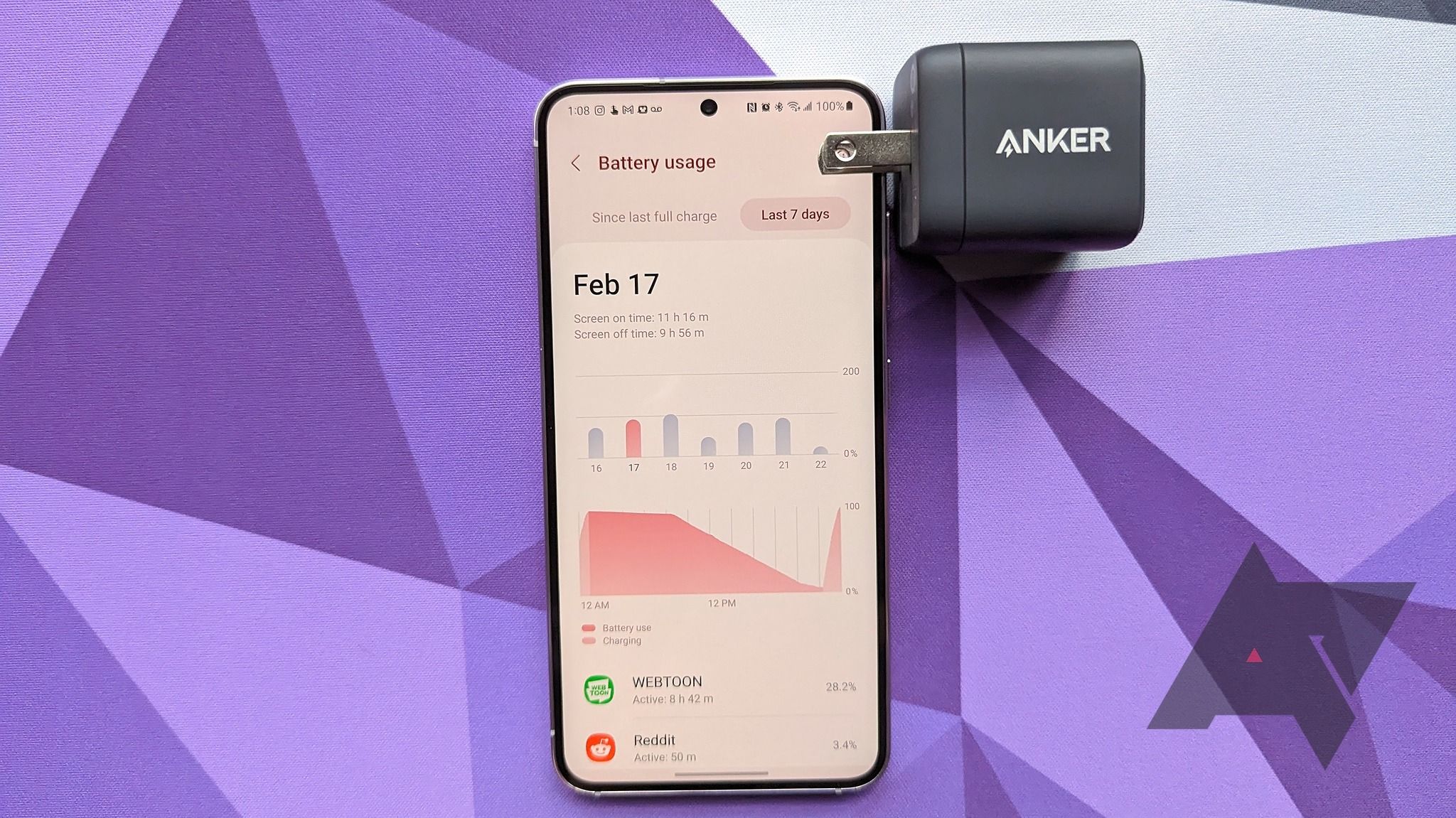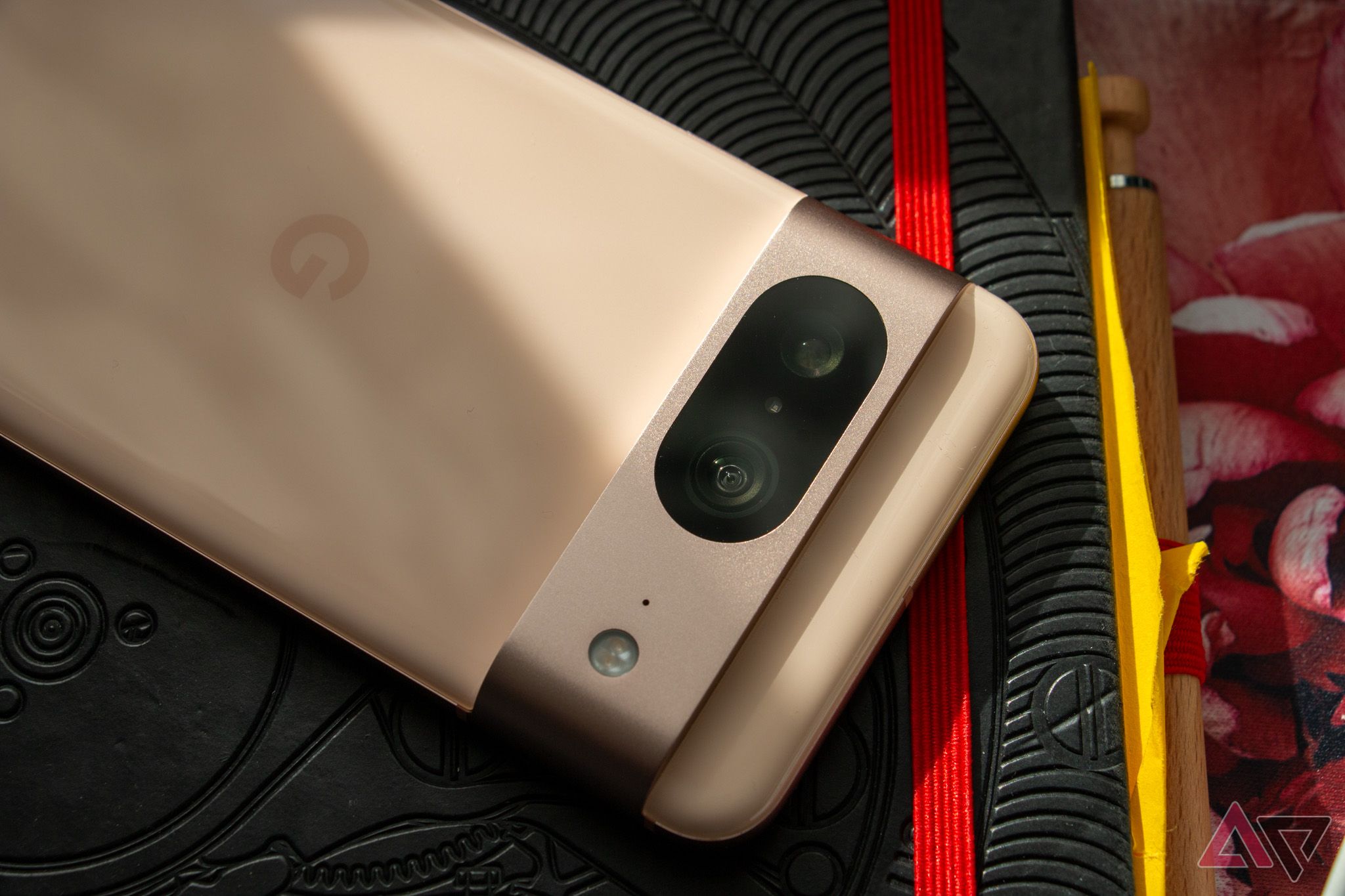-
Google Pixel 8
Camera championWhile slightly larger than the Galaxy S23, this is still a “small” flagship phone that finally fixed the last of its major flaws that troubled the Pixel 6 and 7. (Well, on a hardware level, anyway.) Some of the AI perks in the Pixel 8 may seem gimmicky, but there’s no denying the benefits of Pixel’s machine-learning prowess, especially when it comes to the camera.
Pros- More consistently clear, color-accurate photos
- Premier access to Google’s AI tools
- 7 years of system updates
Cons- Still uses old, ineffective ultrawide lens
- Misses out on many features/upgrades from Pixel 8 Pro
- Cellular connectivity slightly worse due to Exynos modem
-
Samsung Galaxy S23
Fundamentally excellentWell after its release, the Galaxy S23 has more than proven itself as a dependable, long-lasting smartphone. While One UI might feel slightly more “cluttered” by all the extra features Samsung adds, the attention to detail does come in handy with hidden gems like Temporary Mute, more Quick Settings per screen, and the toolbox of customization goodness that is Good Lock.
Pros- Smaller, higher quality hardware and design
- Better cellular and wireless connectivity
- Consistent performance with full feature parity with larger models
Cons- Slightly more expensive
- Cameras struggle more with motion and low light
- “Only” 4 years of system updates + 1 year security patches
While it is in human nature to long for the biggest and best devices, the largest smartphones also command the largest sizes, and honestly, who needs a phone that heavy or bulky? If you long for a phone that you can actually use one-handed, and that doesn’t cost a rent check, these “base” models are for you. Make no mistake, though, there’s nothing basic about these full-featured flagship phones.
It’s easy to think of the Pixel 8 being an afterthought after being left out of some of the Pixel 8 Pro’s photography and editing features, but even if it’s not the flashiest phone around, it’s still the small(ish) phone to beat thanks to its greatly improved battery life, refined hardware, and seven years of promised system updates. Even so, the Galaxy S23 pulls its own weight for those looking for something more powerful and customizable.
Price, specs & availability
Google released the Google Pixel 8 on October 12, 2023, after announcing it on October 4, at $699 for the 128GB version and $759 for the 256GB version. The Pixel 8 is available in 21 countries, and in the United States, it is sold by most major retailers — Amazon, Best Buy, Walmart, Target — and carriers. It comes in four colors, with the latecomer Lime complementing the eye-catching Hazel and Rose.
The Samsung Galaxy S23 went on sale on February 17, 2023. with the 128GB model costing $800 and the 256GB costing $860. You can buy the S23 in approximately 130 countries worldwide, and in the United States, it is available on practically every carrier and in most retailers. It comes in Phantom Black, Green, Cream, Lavender, and the Samsung.com-exclusive Graphite and Lime — although the exclusives aren’t available through Samsung anymore.
-
Google Pixel 8 Samsung Galaxy S23 SoC Google Tensor G3 Qualcomm Snapdragon 8 Gen 2 Mobile Platform for Galaxy RAM 8GB 8GB Storage 128GB, 256GB 128GB or 256GB Battery 4,575mAh 3,900mAh Ports USB-C USB-C Operating System Android 14 One UI 5.1 w/ Android 14 Front camera 10.5MP selfie camera 12MP, f/2.2 Rear camera 50 MP main; 12MP ultrawide 50MP, f/1.8 OIS main, 12MP, f/2.2 ultrawide, 10MP, f/2.4 OIS telephoto (3x) Connectivity 4G, 5G mmWave, Wi-Fi 7, Bluetooth, NFC 5.3, NFC 4G, 5G, Wi-Fi 6E, Bluetooth 5.3, NFC Dimensions 150.5 × 70.8 × 8.9mm 146.3 × 70.9 × 7.6mm Colors Rose, Hazel, Obsidian Black Phantom Black, Cream, Green, Lavender + Samsung.com exclusive Lime, Graphite Display type OLED, 60-120Hz AMOLED, 120Hz Weight 187g 168g Charge speed 27W wired, 18W wireless 25W wired, 15W wireless IP Rating IP68 IP68 Display dimensions 6.2″ 6.1″, 19.5:9 Display resolution 1080 × 2400 2340 × 1080
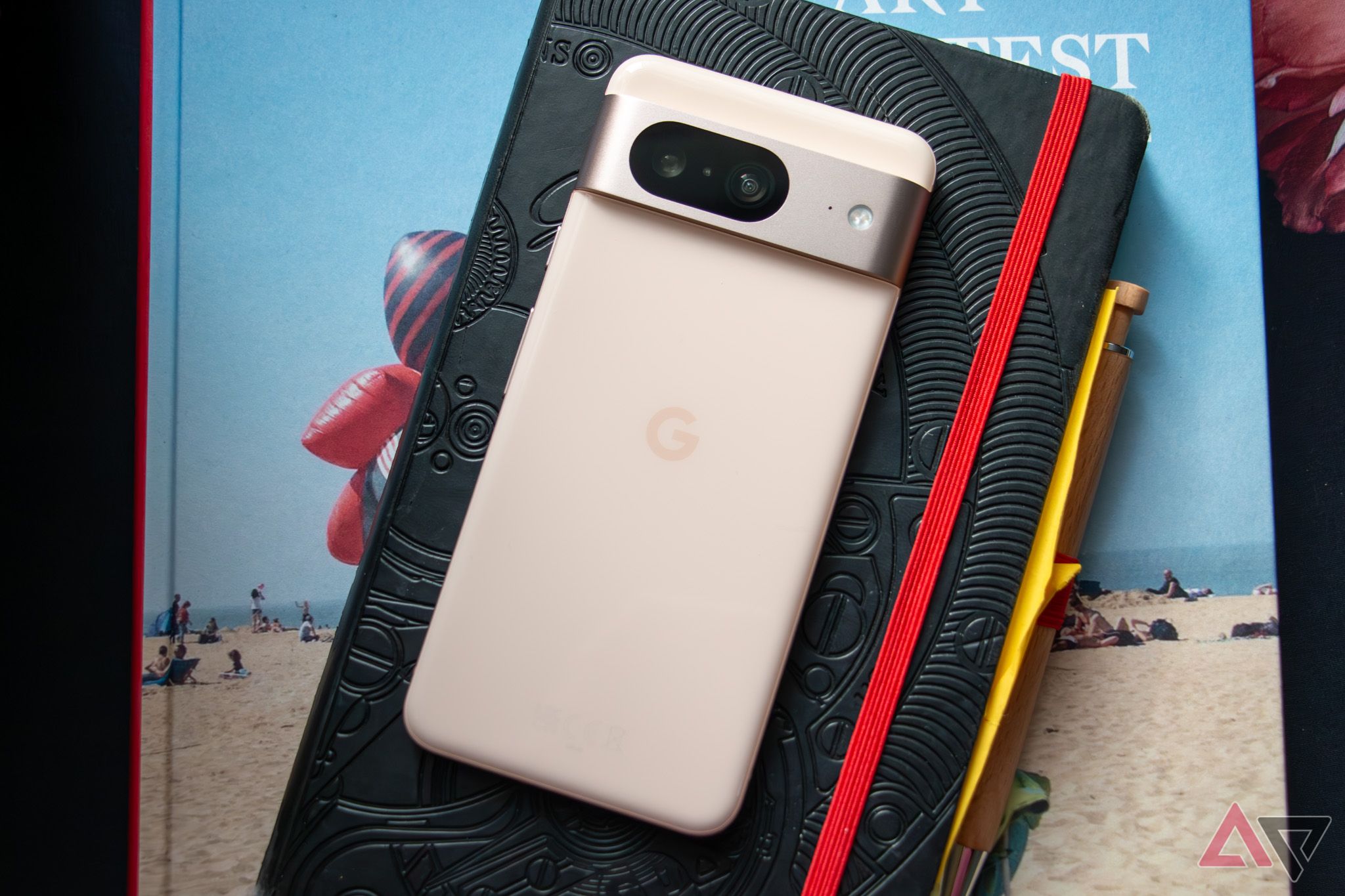
Google Pixel 8 review: The Pixel for the masses
The Pixel 8 doesn’t need every feature the 8 Pro offers, it’s packing more than enough
Design
Squared-off luxury and marshmallow-like curves
Both Samsung and Google stuck to their predecessors’ designs in 2023, choosing to refine things rather than reinvent the wheel. For the Galaxy S23, the sides of the phone feel flatter and the corners sharper. The cameras are no longer housed in one single module, but sit as three separate, dust-magnet circles in a vertical bar at the top-left corner of the phone. While I usually don’t mind the cameras being in the corner, the bottom, telephoto lens is pretty easy to smudge, given the phone’s petite size.When using a MagSafe Galaxy S23 case, many cases, magnetic grips, and wallets will butt up to or outright cover the bottom camera (In fact, many case makers skipped MagSafe on the baby S23 because they deemed it was too close.) Though the S23 wasn’t designed for MagSafe, the placement of the cameras also impacts the ability to use other phone accessories like phone grips and stick-on wallets.
The Google Pixel 8, on the other hand, decided to round all the things. More rounded corners to the device, more rounded edges to the back glass — which is still shiny because Google only saw fit to give the Pro matte glass — and better rounding to the camera cutout and camera bar as a whole. The extra-rounded corners and shrunken bezels around the display help the phone look and feel much smaller than the Pixel 7 while technically having only a 0.1-inch smaller screen.
The camera bar on the Google Pixel 8 remains a “you love it or hate it” design choice, and I love it, as it keeps the lens cutout elevated and angled up even if I set it down on a table and the camera bar’s thickness may be slimmer than years past. It helps make for a better grip in the hand, and when picking up the phone in the dark, the bar tells me exactly how far up or down on the sides I’ve grabbed it, making it even easier to hit the power and volume buttons.
Display
Two behemoths fight for the crown
Technically speaking, the Google Pixel 8’s screen is 6.2-inches, but the extra-rounded corners make it feel smaller when it’s actually in your hand. The Galaxy S23’s 6.1-inch also features rounded corners, but not quite to the same degree. Both screens get admirably bright outside — the Pixel 8 may win in peak outdoor brightness, but the Galaxy S23 can drop to a lower refresh rate depending on the app as it is a truly variable refresh screen while the Pixel 8 can only swap between 60 and 120Hz.
Both screens produce vivid color, feature roughly 1080p resolution — the Pixel 8’s slightly taller aspect ratio has 60 extra vertical pixels — and have under-the-screen fingerprint sensors. Samsung’s ultrasonic sensor still has a better success rate than the Pixel 8’s optical sensor, but Google has flaunted face unlock for the Pixel 8 again, a push we haven’t seen in earnest since the Pixel 4 days.
They’re both quite smooth when flicking through social media feeds or tapping through the last frantic seconds of your latest game round, and I’ve watched more than my fair share of videos on the Galaxy S23 even when a big screen TV is sitting ten feet away. In short, the screens here are a bit of a draw, each excellent in their own right.
Software
Two diverging paths
This is where things get more subjective. Google’s Pixel design and Samsung’s One UI both have their fans — and their haters. Once upon a time, we’d call the Pixel the “cleaner” phone compared to a Galaxy, but years of quarterly Feature Drops have made the Pixel 8 every bit as feature-stuffed. Instead, the software options here can be best classified in the following way: one-note or customizable.
Google has made headway on being able to customize parts of the Pixel 8. Since the Pixel 8’s release, for instance, it has moved to make the lock screen more adaptable with new options for the clock style, size, colors, and shortcuts. That said, the Pixel Launcher’s home screen isn’t even half as adaptable as One UI Home, you can see more Quick Settings at a time on the S23, and so on. That means that things are a little simpler on the Pixel, but for many, that’s part of the appeal.
Another important factor of the software in here is how long the phone will be updated and secure. Google reclaimed their crown for having the longest update promise for the Pixel 8: seven years of system and security updates, beating the Galaxy S23’s four years of system updates with one additional year of security updates. Google still tends to get system updates about a month and a half ahead of Samsung, but for monthly updates, Samsung has caught up and can now even beat Google to the update OTA some months.
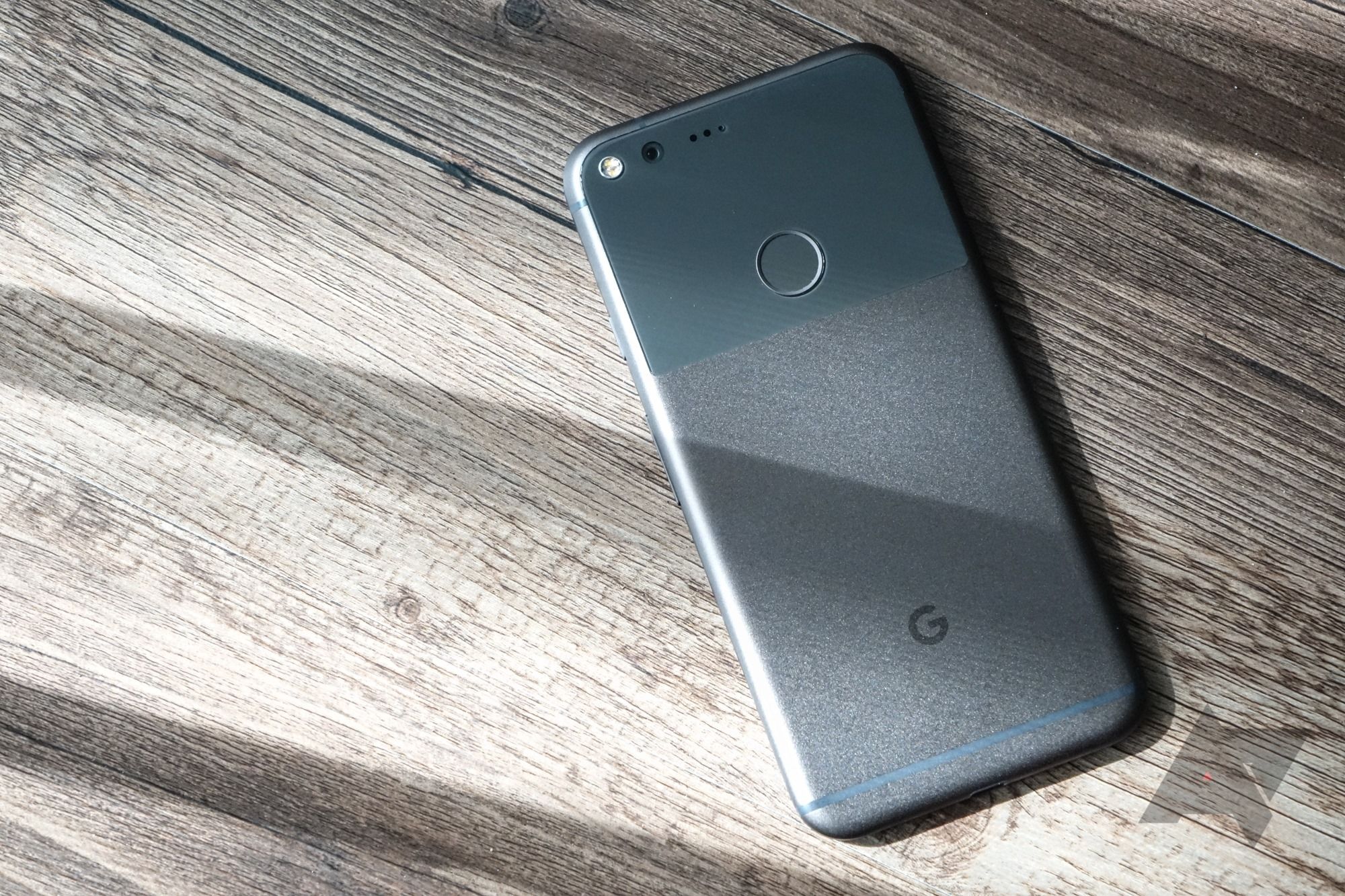
Will 2024’s Android flagships actually last seven years?
As Android heavy-hitters promise longer software support, how gracefully can we expect our hardware to age?
The ever-evolving AI landscape
Pixels typically receive Google’s novel AI features before other manufacturer’s phones do, and that will almost certainly continue as Google leans harder into machine learning and large language model integration. Since the 2023 Pixel family hit the market, for example, we’ve seen photo touch-up tools like Magic Eraser transition to general Android availability. This potentially paves the way for more Gemini-based, Pixel-exclusive features moving forward, although the smaller Pixel is apparently slightly limited in on-device AI processing by its 8GB of RAM.
Samsung’s Galaxy AI — actually built around the same Google Gemini model — is in a similar boat, with its previously exclusive Circle to Search rolling out to all Android devices. Like Google, Samsung remains steadfast in its push toward novel, algorithmic features, and has even indicated it might start charging a premium for AI feature access. Time will tell how that business model works out, but Samsung certainly has the R&D assets to continue pushing interesting AI inclusions.
Performance
For discerning users, the gap’s quite large
Both phones have performed well whether we’re throwing app multitasking, games, or multi-hour wireless Android Auto navigation alongside media playback at them. The Snapdragon 8 Gen 2 has all the getup and go you’d expect from the chipset inside most of its contemporary flagships, and Google’s Tensor G3 sports improved efficiency, though it’s still not perfect.
In day-to-day use, most people have great experiences with both, but Android Police readers can be (rightfully) a demanding bunch. The Tensor G3 simply doesn’t pack the processing punch of the Snapdragon 8 Gen 2, and tends to get warmer and throttle more readily. You might never notice if you don’t regularly engage in heavy workloads, but anybody who pushes their device to its limits needs to take this into heavy consideration.
Battery life
Good and great should both satisfy most people
Even extremely heavy users should have no problem pushing the Galaxy S23 to 7–9 hours of screen on time in a given day. The most difficult days in terms of battery drain are those with multiple hours of wireless Android Auto driving, but even then, the drain is similar on other Android phones, including the Pixel 8.
Previous non-Pro Pixels have sometimes struggled with battery life — looking at you, Pixel 4! — but the Pixel 8 has largely broken out of that rut. In our Pixel 8 review, Manuel Vonau got 5 and a half hours of screen time on a day with poor cell reception and multi-hour drives to the coast, and that battery life got even better in “normal” everyday use:
On a day mostly spent on Wi-Fi, I could extend that number to 6 hours and 30 minutes. When I wasn’t trying to run the battery down on other days, I achieved rates ranging from 4 to 5:30 hours with 15 to 30 percent of battery reserves left.
The one black mark for both of these phones is that they don’t charge very quickly: the Pixel 8 tops out at an “improved” 27W while the Galaxy S23 is still stuck at 25W with Samsung’s proprietary Super Fast Charge protocol on top of USB-C Power Delivery.
Both phones will recharge in about an hour and a half, but they both bow down before OnePlus, Oppo, Honor, and the rest of the non-American Android market. Both phones also lack Qi2 support but have ample numbers of MagSafe cases to retrofit it into working well enough with magnetic wireless chargers.
Cameras
Neither stinks, but Pixel pics are easy as pie
This is another somewhat subjective area, but we can distill things down quite easily here: the Google Pixel 8 takes more color-accurate photos and handles low lighting and action shots much, much better than the Galaxy S23. However, the lack of a zoom lens and the baby 8 missing out on the Pixel 8 Pro’s ultrawide lens means its ultrawide will never feel “ultra,” and the zoom will feel limited if you’ve used a recent iPhone or Galaxy phone.
The Galaxy S23 does have a Pro mode you can shoot in, which the Pixel 8 lacks — another Pro-only feature. And the S23’s 3× zoom might not be as useful as the S23 Ultra’s 10×, but the Pixel doesn’t offer telephoto imaging at all. However, given the S23’s tendency to oversharpen and oversaturate images compared to the Pixel, you’ll need to spend more time adjusting those pro controls per shot — or even just the regular exposure slider, as it resets after every single photo, whereas Pixel will hold those settings until reset.
The Galaxy S23’s selfie camera also pulls out a slight victory because Google only upgraded the 8 Pro’s selfie camera, but Google’s image processing more than balances things out, especially for features like Face Unlock, which Google says is accurate enough on the Pixel 8 that it it can even be trusted for unlocking your banking apps.
Which is right for you?
Normally, we’d declare a clear winner, but these phones are slightly different flavors of excellent, and both easily win their spots among the best Android phones you can buy today. The Google Pixel 8 has a clear advantage in photography and the quality of its Pixel-exclusive features — I miss Clear Calling and automatic Call Screening every single day — but after years of Pixels having some kind of major flaw found in the weeks or months after they release, I still find myself holding onto that skepticism. I want to believe, and if you’re in the market for a new phone, the Pixel 8 remains the most refined “small” phone to date.
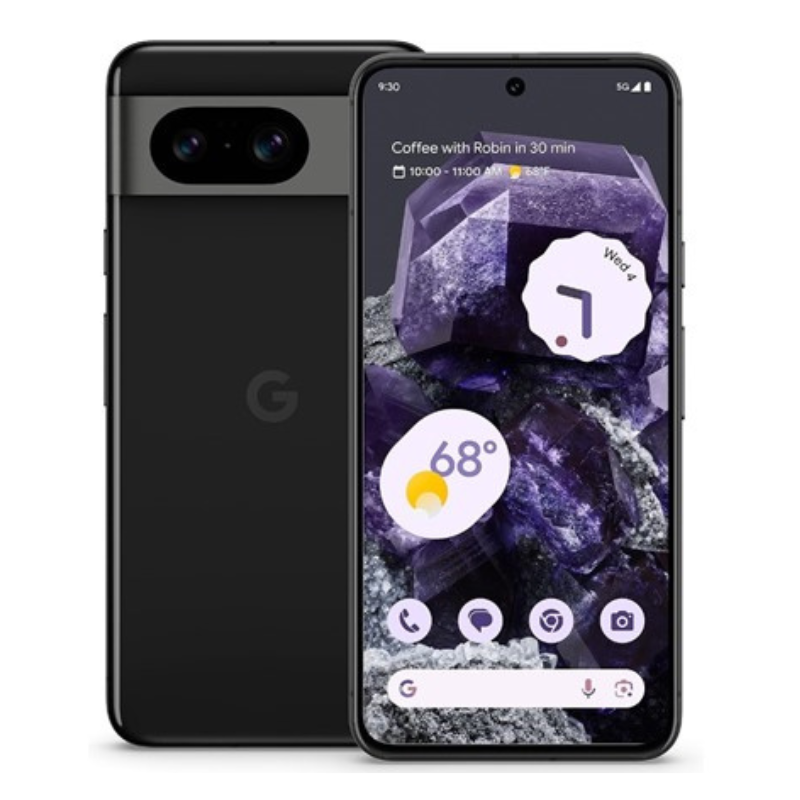
Google Pixel 8
The complete package, now with good battery life
Now that Google seems to have fixed its longstanding battery issues and is once again offering the best software support life of any Android phone, the Pixel 8 is hard to turn down. Even missing out on the 8 Pro’s extra goodies, the Pixel 8’s camera still wins out over Samsung once things start moving, even if it really could have used that new ultrawide lens
But if you demand the absolute best performance and connectivity from your device, the Galaxy S23 makes a strong argument in every area except photography. Even then, the cameras on the S23 are quite capable, just not as effortless. Plus, a few of our expert editors and reviewers have used it as a long-term daily driver, and routinely get several hours of screen-on time.
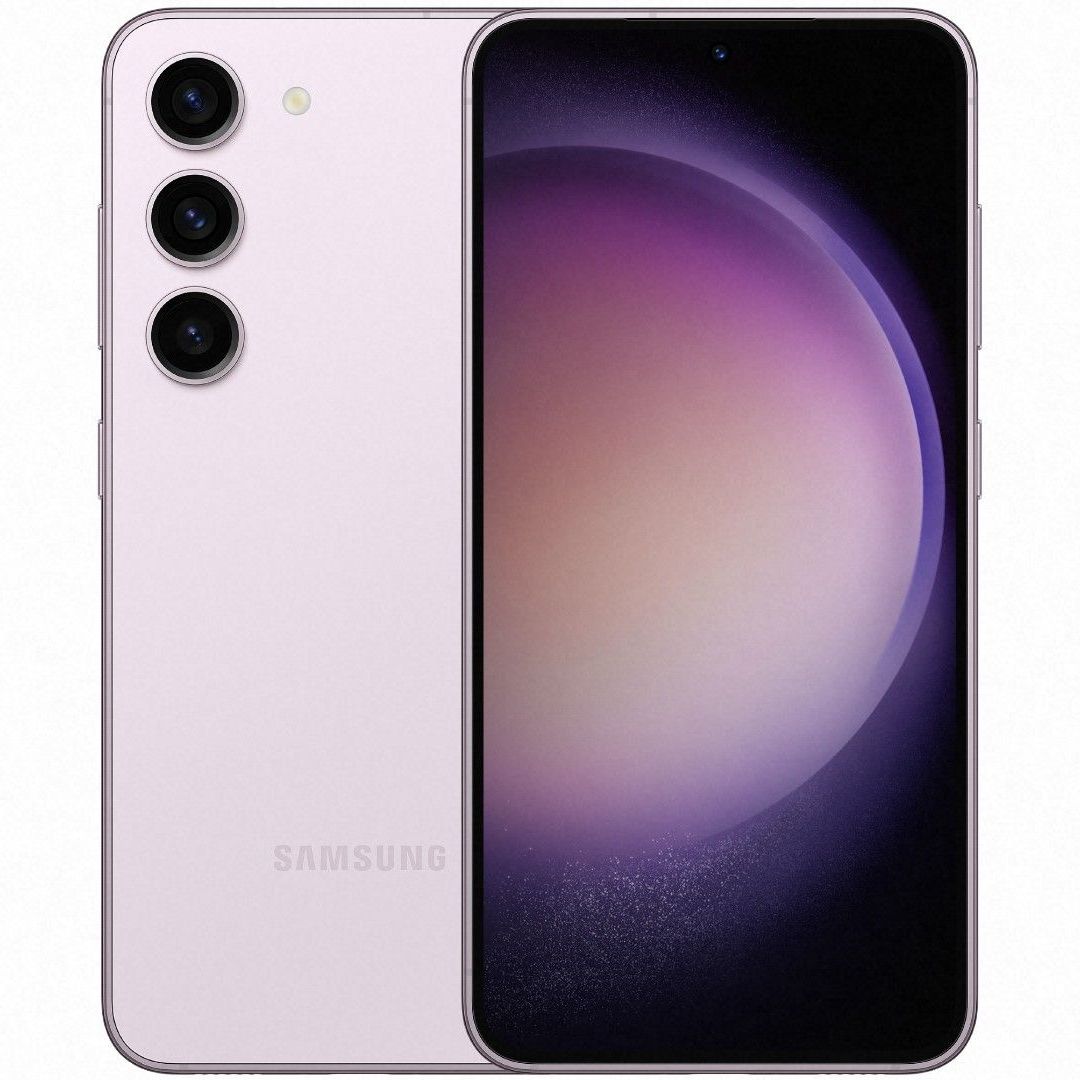
Samsung Galaxy S23
Incredible performance and customization potential
Samsung’s Galaxy S23 may not look quite as sexy as the rounded-off Pixel 8, but at its core, it’s a more reliable cell phone due to using a Qualcomm modem inside the Snapdragon 8 Gen 2. One UI is an acquired taste, but small add-ons over normal Android features help it earn its devout following, and the battery life on my Galaxy S23 has been fantastic, even after six months of heavy use.




